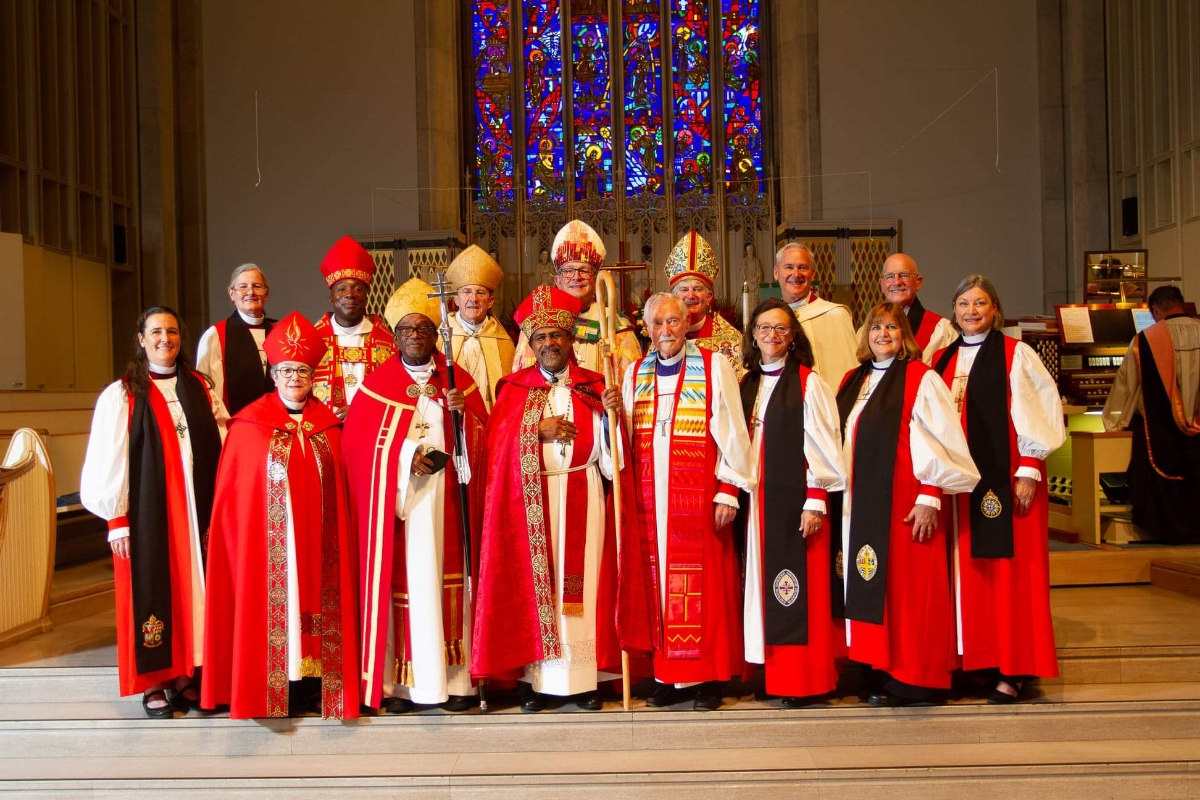 St Alban’s Episcopal Church Bolivar, Missouri Thursday, June 29, 2022 Reflection #3 on the Ordination and Consecration of The Rt Rev Jos Tharakan  What are all those funny costumes? They are called vestments, not costumes! We are still happily using antique language and we love it. To vest someone is to dress them, or to clothe them. We use that word in ordinary speech, too, for example, to “vest” authority in someone. And so vestments are pieces of clothing that symbolize authority. The white garment is called an alb – which actually means, white. It is like the baptismal garment: a symbol of innocence and purity. When Jos entered the church for his ordination and consecration that is what he was wearing. It is what ordained deacons and priests wear under other vestments during the Eucharist. If you watched the service, the first thing he was given was his priestly stole. You see me wear one every Sunday, that long strip of cloth, colored differently according to the liturgical season. At Jos’ ordination we wore red ones, symbol of the Holy Spirit. A priest wears it across both shoulders identifying leadership and authority. A deacon wears it across one shoulder, tied on the side, symbol of a servant. Remember that for Jesus, “servant” is what we are all invited to be – as he also was. It is not a less-than position. The next thing he was given was his cope, the great, formal, ceremonial cape. It was a cloak of Roman authorities, something only people of authority wore on the streets. The Church borrowed those symbols, because they were readily understandable. He was given his mitre that pointed hat, that folds neatly when not in use, which is the ceremonial symbol of his authority. You will notice that he wears it when speaking to the people, but not when he is praying or celebrating Eucharist – when God’s authority is in focus. He was given his pectoral cross. It’s a large cross worn on the chest. Each bishop designs or chooses their own style cross. Jos’ cross is a tau, the Franciscan cross in the shape of a T, probably similar to the actual cross on which Jesus died. And he was given his episcopal ring. Jos’s is simple silver; which he designed. Some are very ornate. Again, each bishop chooses his or her own ring, the symbol of their office. The bishops that were standing with the Presiding Bishop as co-consecrators were wearing their formal cope and mitre. But all the other bishops wore the sleeveless red garment called a chimere and the large black scarf, bigger than a stole, called a tippet. It is sometimes called a “preaching scarf.” If you look closely you will notice the usually commercially-made Episcopal shield on one side, and the shield of their diocese on the other. Jos was given a beautiful one by a 90 yr. old retired bishop of Idaho, which has hand-embroidered symbols on it. The bishop’s shirt, when all those outer garments are removed, is purple. They wear the clerical collar like all priests and deacons, but the shirt is usually purple.  The Presiding Bishop. Michael Curry, introducing the new bishop to his diocese.  Jos was the primary celebrant at the Eucharist – and he is a beautiful officiant, never rushes to get through the words. On Sunday, he was welcomed by the cathedral and taken to his seat/his chair/his cathedra – from which the word cathedral comes. The cathedral is the “home”, the center for the whole diocese.But afterwards, to everyone’s surprise, he emerged into the reception wearing what he is on the inside, on the outside – making a statement: He is at heart the simple Franciscan he has always been. And his episcopate will surely reflect that. Thanks be to God. |

Categories:
Tags:
No responses yet